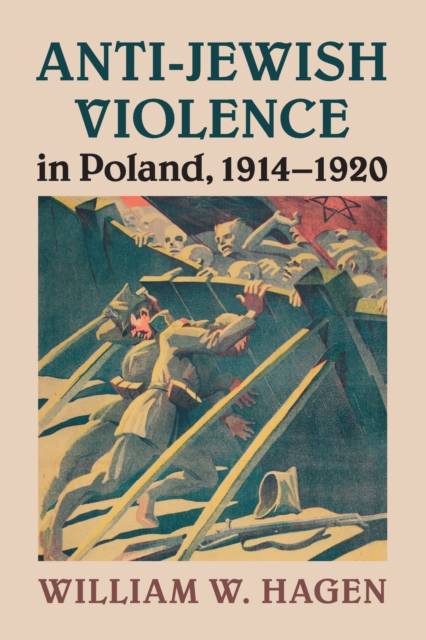
Door een staking bij bpost kan je online bestelling op dit moment iets langer onderweg zijn dan voorzien. Dringend iets nodig? Onze winkels ontvangen jou met open armen!
- Afhalen na 1 uur in een winkel met voorraad
- Gratis thuislevering in België vanaf € 30
- Ruim aanbod met 7 miljoen producten
Door een staking bij bpost kan je online bestelling op dit moment iets langer onderweg zijn dan voorzien. Dringend iets nodig? Onze winkels ontvangen jou met open armen!
- Afhalen na 1 uur in een winkel met voorraad
- Gratis thuislevering in België vanaf € 30
- Ruim aanbod met 7 miljoen producten
Zoeken
€ 67,95
+ 135 punten
Uitvoering
Omschrijving
Widespread anti-Jewish pogroms accompanied the rebirth of Polish statehood out of World War I and Polish-Soviet War. William W. Hagen offers the pogroms' first scholarly account, revealing how they served as brutal stagings by ordinary people of scenarios dramatizing popular anti-Jewish fears and resentments. While scholarship on modern anti-Semitism has stressed its ideological inspiration ('print anti-Semitism'), this study shows that anti-Jewish violence by perpetrators among civilians and soldiers expressed magic-infused anxieties and longings for redemption from present threats and suffering ('folk anti-Semitism'). Illustrated with contemporary photographs and constructed from extensive, newly discovered archival sources from three continents, this is an innovative work in east European history. Using extensive first-person testimonies, it reveals gaps - but also correspondences - between popular attitudes and those of the political elite. The pogroms raged against the conscious will of new Poland's governors whilst Christians high and low sometimes sought, even successfully, to block them.
Specificaties
Betrokkenen
- Auteur(s):
- Uitgeverij:
Inhoud
- Aantal bladzijden:
- 566
- Taal:
- Engels
Eigenschappen
- Productcode (EAN):
- 9780521738187
- Verschijningsdatum:
- 19/04/2018
- Uitvoering:
- Paperback
- Formaat:
- Trade paperback (VS)
- Afmetingen:
- 181 mm x 229 mm
- Gewicht:
- 757 g

Alleen bij Standaard Boekhandel
+ 135 punten op je klantenkaart van Standaard Boekhandel
Beoordelingen
We publiceren alleen reviews die voldoen aan de voorwaarden voor reviews. Bekijk onze voorwaarden voor reviews.











